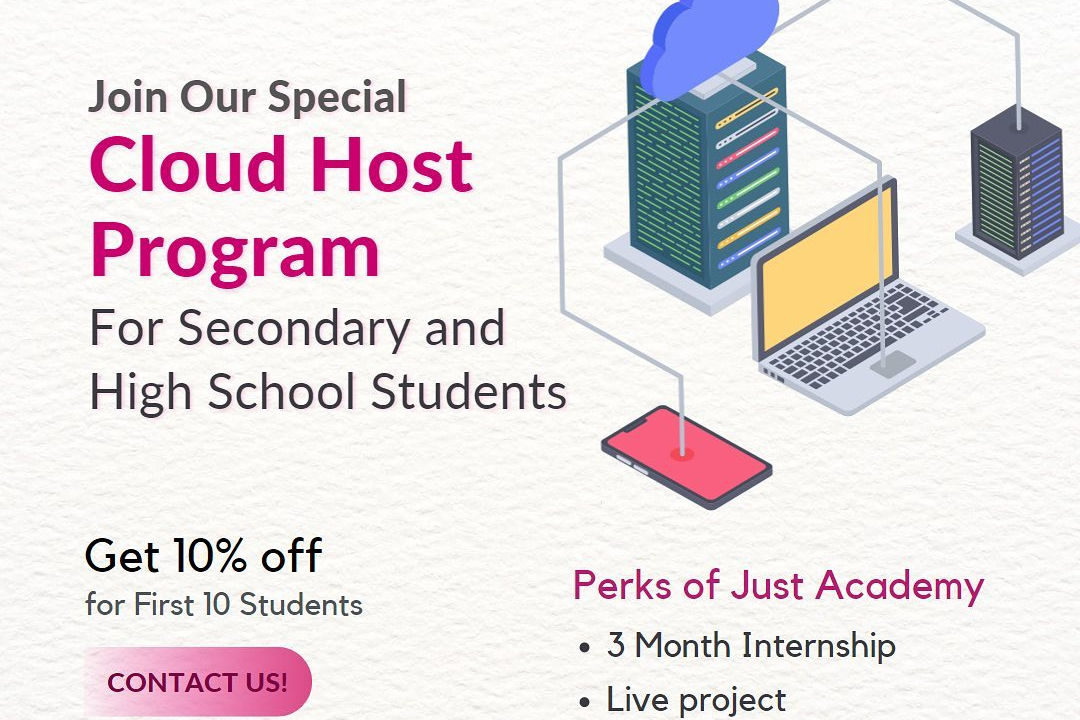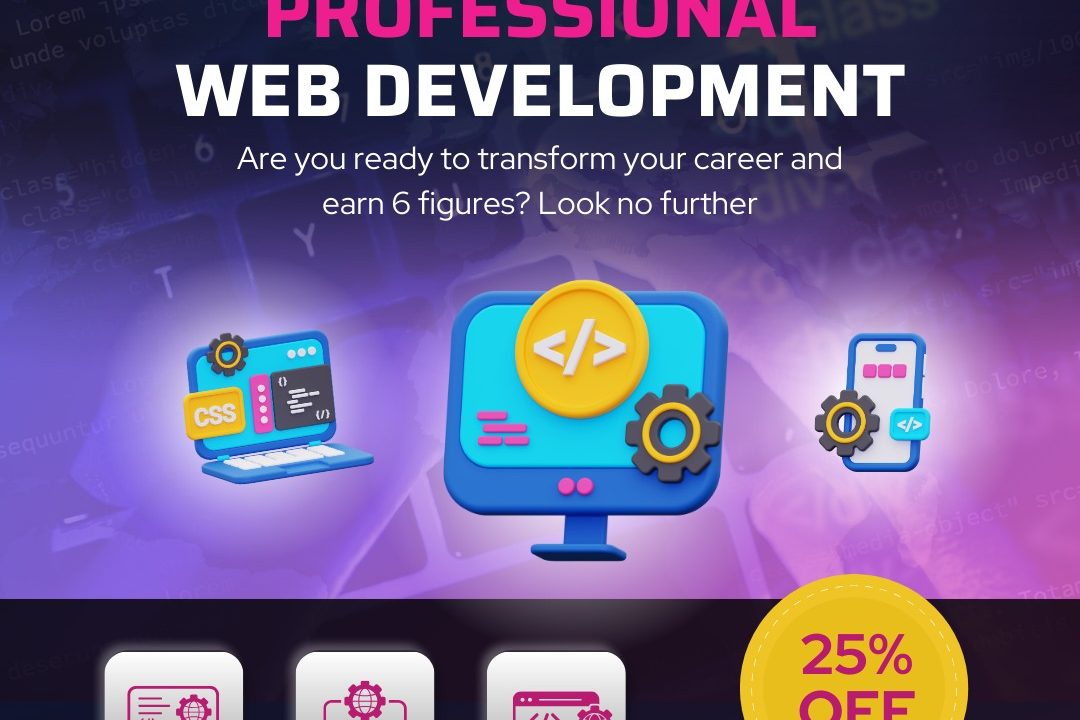AWS Course Content Details
Comprehensive Overview of AWS Course Content
AWS Course Content Details
The AWS course offered by JustAcademy provides comprehensive coverage of Amazon Web Services, one of the most widely adopted cloud platforms in the world. Participants will delve into foundational topics such as cloud computing concepts, AWS service models, and architecture principles. The curriculum includes hands-on experience with essential tools like EC2, S3, RDS, and Lambda, allowing learners to work on real-time projects that reflect industry scenarios. By mastering AWS, students not only enhance their technical skills but also boost their career prospects in a cloud-driven job market, making this course an invaluable asset for aspiring cloud professionals.
To Download Our Brochure: https://www.justacademy.co/download-brochure-for-free
Message us for more information: +91 9987184296
The AWS course offered by JustAcademy provides comprehensive coverage of Amazon Web Services, one of the most widely adopted cloud platforms in the world. Participants will delve into foundational topics such as cloud computing concepts, AWS service models, and architecture principles. The curriculum includes hands on experience with essential tools like EC2, S3, RDS, and Lambda, allowing learners to work on real time projects that reflect industry scenarios. By mastering AWS, students not only enhance their technical skills but also boost their career prospects in a cloud driven job market, making this course an invaluable asset for aspiring cloud professionals.
Course Overview
The “AWS Course Content Details” at JustAcademy is designed to equip learners with a thorough understanding of Amazon Web Services and its diverse offerings. This course covers essential topics such as cloud computing fundamentals, AWS service models, and best practices for architecting on the cloud. Participants will engage in hands-on projects involving core AWS services like EC2, S3, Lambda, and RDS, enabling them to apply theoretical knowledge in real-world scenarios. By the end of the course, students will be well-prepared to leverage AWS technologies to enhance their careers in cloud computing, addressing the growing demand for skilled professionals in this field.
Course Description
The ‘AWS Course Content Details’ offered by JustAcademy provides a comprehensive introduction to Amazon Web Services, focusing on cloud computing essentials and AWS infrastructure. This course explores key services such as EC2, S3, Lambda, and RDS, emphasizing practical applications through real-time projects that simulate real-world scenarios. Students will gain a solid understanding of cloud architecture, deployment strategies, and best practices for security and scalability. Whether you're a beginner looking to enter the cloud computing field or a professional aiming to enhance your skills, this course equips you with the knowledge and hands-on experience necessary to excel in AWS and meet the growing demand for cloud expertise in today's technology landscape.
Key Features
1 - Comprehensive Tool Coverage: Provides hands-on training with a range of industry-standard testing tools, including Selenium, JIRA, LoadRunner, and TestRail.
2) Practical Exercises: Features real-world exercises and case studies to apply tools in various testing scenarios.
3) Interactive Learning: Includes interactive sessions with industry experts for personalized feedback and guidance.
4) Detailed Tutorials: Offers extensive tutorials and documentation on tool functionalities and best practices.
5) Advanced Techniques: Covers both fundamental and advanced techniques for using testing tools effectively.
6) Data Visualization: Integrates tools for visualizing test metrics and results, enhancing data interpretation and decision-making.
7) Tool Integration: Teaches how to integrate testing tools into the software development lifecycle for streamlined workflows.
8) Project-Based Learning: Focuses on project-based learning to build practical skills and create a portfolio of completed tasks.
9) Career Support: Provides resources and support for applying learned skills to real-world job scenarios, including resume building and interview preparation.
10) Up-to-Date Content: Ensures that course materials reflect the latest industry standards and tool updates.
Benefits of taking our course
Functional Tools
1 - Amazon EC2 (Elastic Compute Cloud)
Amazon EC2 is a foundational service that provides scalable computing capacity in the cloud. It allows students to launch virtual machines, known as instances, on demand based on their application's requirements. The course covers instance types, security groups, key pairs, and best practices for instance management. Students learn how to effectively set up, configure, and manage these instances to serve various application needs while optimizing performance and cost.
2) Amazon S3 (Simple Storage Service)
Amazon S3 is an object storage service designed to store and retrieve any amount of data from anywhere on the web. In this part of the course, students explore S3 bucket creation, data management, security configurations, and lifecycle policies. Practical exercises include uploading, retrieving, and archiving data using the AWS Management Console and CLI. Understanding S3 is crucial for managing data in cloud based applications, making it a vital topic in AWS training.
3) AWS Lambda
AWS Lambda is a serverless computing service that allows students to run code without provisioning or managing servers. The course introduces the concept of event driven programming and how to create Lambda functions that automatically execute in response to events from various AWS services. Students gain hands on experience in deploying functions and using trigger sources like S3 and DynamoDB, ultimately exploring strategies for building scalable applications without the overhead of server management.
4) Amazon RDS (Relational Database Service)
Amazon RDS simplifies setup, operating, and scaling of relational databases in the cloud. The training program covers the major databases supported by RDS, including MySQL, PostgreSQL, and SQL Server. Students learn how to create, configure, and manage databases, including backup and recovery options. Understanding RDS is essential for server side application development, allowing students to utilize managed database features while concentrating on building resilient applications.
5) Amazon VPC (Virtual Private Cloud)
Amazon VPC enables students to create isolated sections of the AWS cloud to host their resources. The course provides an in depth look at VPC configuration, subnets, route tables, and internet gateways. Students explore how to employ security measures using network access control lists and security groups. Mastery of VPC is pivotal for ensuring that applications are both secure and scalable while understanding the intricacies of networking in the cloud.
6) AWS CloudFormation
AWS CloudFormation is a powerful tool that enables students to describe and provision all AWS resources as code. The course covers the fundamentals of Infrastructure as Code (IaC), teaching students how to use YAML or JSON templates to automate resource deployment. By mastering CloudFormation, students can streamline the process of infrastructure management and efficiently replicate environments, ensuring consistency and compliance across different stages of application development.
7) AWS IAM (Identity and Access Management)
AWS IAM is crucial for managing access and permissions to AWS resources securely. In this course segment, students learn about creating users, groups, roles, and policies to control access levels. By understanding IAM best practices, students can establish robust security protocols, enabling safe operations and compliance with industry standards while minimizing the risks associated with unauthorized access.
8) Amazon CloudFront
Amazon CloudFront is a content delivery network (CDN) service that enhances website performance by caching content in various global locations. The course teaches students how to set up CloudFront distributions and manage cache behaviors effectively. Practical exercises include optimizing content delivery, using CDN for dynamic content, and understanding ways to reduce latency, ultimately ensuring a better user experience for applications that serve diverse audiences.
9) AWS Elastic Beanstalk
AWS Elastic Beanstalk simplifies the process of deploying and scaling web applications and services. This section covers the platform's capabilities, including environment configurations, deployment methods, and resource management. Students learn through hands on projects how to deploy applications in various programming languages, monitor system health, and manage dependencies, making it suitable for developers looking to streamline their app deployment processes.
10) AWS CloudWatch
AWS CloudWatch provides monitoring and logging capabilities for AWS resources and applications. In this part of the course, students explore how to set up CloudWatch Alarms, Logs, and Metrics to track system performance and operational health. The curriculum emphasizes using CloudWatch for automated responses to changes in system performance, making it essential for maintaining application reliability and optimizing resources efficiently.
11 - AWS DynamoDB
Amazon DynamoDB is a fully managed NoSQL database service. Students learn how to design and manage data in DynamoDB, focusing on key concepts like tables, items, and attributes. The course covers performance optimization techniques, including partition keys and secondary indexes. Hands on projects allow students to build applications that leverage DynamoDB's speed and scalability, making it suitable for real time applications with diverse data types.
12) AWS Step Functions
AWS Step Functions is a serverless orchestration service that allows students to coordinate multiple AWS services into serverless workflows. This course segment teaches students how to design complex workflows using visual representations. Students gain practical knowledge of creating state machines to manage work processes efficiently, emphasizing error handling and retry mechanisms that enhance application resilience.
13) AWS SQS (Simple Queue Service)
AWS SQS is a fully managed message queuing service that enables decoupling of components in distributed applications. The course introduces students to the basics of message queue design and implementation. Through practical exercises, students learn how to create and manage queues, send and receive messages, and use SQS alongside other AWS services, paving the way for building scalable and fault tolerant microservices architectures.
14) Amazon EKS (Elastic Kubernetes Service)
Amazon EKS simplifies deploying, managing, and scaling containerized applications using Kubernetes. In this segment, students learn the fundamentals of Kubernetes architecture and its concepts. The course provides hands on experience in provisioning EKS clusters, deploying applications with Helm, and managing workloads, enabling students to understand how to leverage Kubernetes for efficient container orchestration in a cloud environment.
15) AWS CodePipeline
AWS CodePipeline is a continuous integration and continuous delivery (CI/CD) service that automates the software release process. Students learn to create pipelines to build, test, and deploy applications automatically. By practicing with various stages of a pipeline, students understand how to integrate with other AWS services like CodeBuild and CodeDeploy, equipping them with the skills needed for modern software development and deployment practices.
16) AWS Auto Scaling
AWS Auto Scaling helps maintain application performance while minimizing costs. In this segment, students learn about different scaling policies and how to configure them based on performance metrics and utilization levels. With hands on exercises, students master the art of setting up Auto Scaling groups and instance management, ensuring that applications automatically adjust resources to meet demand effectively and efficiently.
17) AWS Organizations
AWS Organizations enables students to manage multiple AWS accounts centrally. The course covers how to create and manage organizational units, apply service control policies, and leverage consolidated billing. This knowledge is crucial for maintaining governance and cost management across large enterprise environments, providing students with tools to optimize resource use and ensure compliance with organizational policies.
Each of these points contributes to a comprehensive understanding of AWS services and their applications, preparing students for practical, real world challenges in cloud computing while earning their certifications from JustAcademy.
Browse our course links : https://www.justacademy.co/all-courses
To Join our FREE DEMO Session: Click Here
This information is sourced from JustAcademy
Contact Info:
Roshan Chaturvedi
Message us on Whatsapp: +91 9987184296
Email id: info@justacademy.co
Devops Interview Questions For 3 Years Experience
Java Developer Interview Questions For Freshers
What is hypothesis in machine learning












